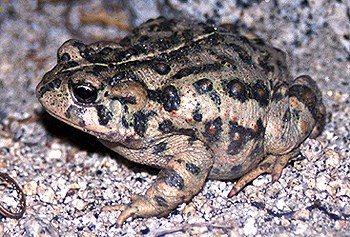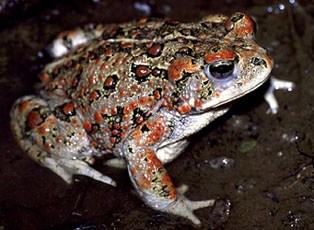
USGS/Chris Brown Scientific Name Introduction Appearance Western toads are a large and robust toad with dry, warty skin. Adults can vary in length from 2-5 inches (snout to vent) and vary in color from green, tan, reddish brown, dusky gray and yellow. Toads can be distinguished by a white stripe running down the middle of their back. Males generally have smoother skin than females. Range Habitat 
USGS/Chris Brown Feeding Reproduction Large schools of tadpoles often feed in shallow water. Tadpoles are dark brown, and grow to about 1 inch in length before metamorphosis. Tadpoles enter metamorphosis in 30 - 45 days, usually in late summer or early fall. When in the process of metamorphosis, many tadpoles are often seen in aggregations at the edge of a pond. Large numbers of newly-transformed toads are often seen hopping around the shores of breeding water. Juvenile toads may either stay and spend the winter, or disperse to nearby sites. Conservation Status
|
Last updated: March 1, 2015
